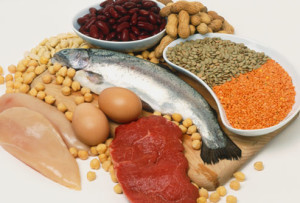The Lean and Mean Calisthenics Diet – 4 Minimalistic Principles
Join the tribe of Movement & Calisthenics Athlete – People just like you that are working with their own body weight to get strength, lose fat build muscle, recover from injuries and live their best lives!
The Lean and Mean Calisthenics Diet
One thing that attracts people to bodyweight training is its simplistic nature.
There’s no need for a gym membership, and you don’t need any special equipment. All you need is your body and your mind. Put those two things together and you can hammer out some of the most intense muscle and strength-building workouts based on calisthenics.
Commit to the Calisthenics Workout Diet To Achieve the Calisthenics Body You Want
If you’re ready to follow the calisthenics diet and want to maximize your workout efforts, commit yourself to eat right and declare war on junk food. That’s a good place to start.
Once you’ve got your mind right about eating healthily, the rest is easy. It’s like bodyweight training in some ways; there are hundreds of ways to eat healthily, with lots of foods to choose from, just like the many bodyweight exercises you can make use of for your personal workout.
4 Principles for Calisthenics Diet
The calisthenics diet isn’t anything complicated.
There’s no complex system to follow, no pills or supplements to take, and no expensive pre-packaged food you need to buy. Here’s the strategy for success with this diet:

THE WAR ON JUNK FOOD - EAT AS NATURAL AS POSSIBLE
You don’t get to be lean and mean by rolling through the drive-thru, ordering a hamburger, soft drink, and bucket of fries. And that ripped look isn’t made from chocolate bars, energy drinks, and pastries. If you’re serious about following the calisthenics diet, you’ve got to declare war on junk food.
An estimated 70 percent of all adults in the United States are overweight or obese, according to the Center for Disease Control and Prevention. About 26 million people have diabetes, and another 79 million are prediabetic, according to the American Diabetes Association.
Controversies may well always abound over whether artificial ingredients, food additives, and pesticides are healthy or unhealthy.
Some argue that it depends on the TYPE of chemical you’re considering, as well as the AMOUNT of said chemical you’re ingesting.
Me? I’ll let scientists continue their seemingly never-ending debates about which ingredients are OK to consume and which are not, but I’ll follow the safe route and avoid them all as much as possible in favor of eating REAL FOOD. The stuff that grows on the ground, on a tree, or comes from an animal. The stuff that only lists one ingredient on the package. The stuff we humans have been eating for tens of thousands of years.
How many times have food manufacturers promoted alternatives – mostly aimed at the weight loss market – that promise to be healthy substitutes for things like fat and sugar? As recently as 1996, the U.S. Food and Drug Administration – the agency in charge of telling Americans which drugs and foods are safe to consume – allowed for the fat substitute Olestra to be used in place of oils in things like chips. Soon, people discovered it “negated the body’s ability to absorb essential vitamins” and gave side effects including “cramps, gas and loose bowels.” Despite this, the ingredient is still legal in the USA. In 2010, Time Magazine called it one of the world’s 50 worst inventions of all time, yet it’s still included in a variety of processed foods.
While this is perhaps one of the more extreme examples of an undesirable food additive, I’ll play it safe and stick with nature-made foods. Yes, you’ll hear about the occasional e.coli-infected spinach or beef recall, but even these are the result of contamination with man-made industrial pollutants and dirty water sources (e.g. sewage), not a problem with the food itself.
And that’s because too many people gobble up burgers, fries, soft drinks, and sugary snacks every day like it’s going to be their last meal. Obesity and diabetes are both diseases that can lead to serious health problems, including death. And no matter how hard you workout, you’ll never achieve your ideal body if you’re eating junk.
The takeaway point:
Read the labels on everything you plan to buy. Go for foods that contain as few ingredients as possible (I personally shoot for five or less). Keep the words of fitness legend and bodyweight calisthenics master, Jack LaLanne, in mind: “If Man makes it, don’t eat it.”

EAT PRODUCE, ORGANIC WHEN POSSIBLE
When was the last time you ever heard about someone overdosing on celery or dying of eating too many raspberries? These stories aren’t exactly making headline news! We evolved to eat fruits and veggies in abundance. These foods are absolutely loaded with all sorts of essential vitamins and minerals your body needs, not only to build quality muscle but also to regulate its every function. Small wonder every medical agency routinely talks about the anti-disease and general health-promoting benefits of nature’s wonder drugs.
So we know fruits and veggies are good, but let’s go one step further. Whenever possible, eat organic produce.
Quite simply, these are foods that have been grown (or raised) on farmlands and pastures free of synthetic chemical pesticides, food additives, or antibiotic agents for at least three years. You can read more about what being organic means here. Again, there is debate as to how healthy/unhealthy pesticides and other man-made chemicals are, but why not play it safe and avoid them altogether if you can?
Challenges to buying organic produce
1. I know that there are a few challenges to consuming only organic food, the first of which is cost. Typically, organic produce will run you about twice as much as its conventionally-grown cousins. The best way to cut down on cost is to buy it in bulk.
In the last two years or so, bulk retailers like Costco have increased their selection of organic produce tremendously. I can now buy a 1.5-pound bag of organic baby kale for just over what it would cost me to buy two bunches (1/4 pound each) of conventionally grown kale. I buy 90% of my organic produce at Costco, as they carry reasonably-priced organic beets, apples, bananas, carrots, celery, spinach, kale, and several other items.
2. The second challenge is availability. Maybe you don’t live near a store that has access to many varieties of organic produce. If this is you, buy what you can organically, and stick to conventional produce otherwise.
As the University of Illinois reports that it’s still far better to eat (well-washed) produce containing pesticides than to forego them altogether. Try buying organic varieties of things that you have to eat the skin on (such as apples, peaches, lettuce leaves, etc.), and buy conventional varieties of things that you’ll throw away the skin/peel (melons, bananas). You can also check out the Environmental Working Group’s list of the top best/worst produce items in terms of pesticide residues.
In fact, I’d encourage you to check them out, either way, their website is an amazing resource for all information pertaining to the consumption of organic produce.
The takeaway point:
Eat organic produce when possible, especially when you have to eat the skin/peel of the item. If you can’t buy organic, eat conventional produce. Just be sure to wash and scrub it well.

GET YOUR PROTEIN IN! EAT MEAT, ORGANIC, WILD, AND GRASS FED
It makes sense that if humans should eat and do what they evolved to eat and do, the same should be said about the animals we eat!
Sadly (from a nutritional and ethical perspective), this is not often the case. For example, cattle in commercial feedlots are often bulked up on a diet of grain (which they don’t naturally eat – cows eat grass). They’re given growth hormones to further fatten them up. Finally, given their unhealthy diet and the crowded facilities they live in, they’re pumped full of antibiotics.
Unsurprisingly, animals not exposed to this sort of treatment seem to be nutritionally more beneficial for the humans who eat them. Grass-fed beef may contain more beneficial fats and vitamins than grain-fed beef.
Fish, too, aren’t immune to the effects of man-made pollutants and practices. You may have heard how our oceans contain toxins and waste, perhaps most famously mercury, which find their way into the fish we eat. Nevertheless, it seems as if eating wild-caught fish (fish caught directly from the ocean) instead of farmed fish (fish raised in sometimes crowded and unhealthy “fish farms” similar to feedlots) may be healthier. Wild-caught fish tend to be higher in Omega 3 fatty acids and proteins, both of which are key ingredients to building muscle mass.
Your muscles need protein to repair the damage done during a tough bodyweight workout. Pull-ups, squats, lunges, push-ups and other exercises can challenge your muscles. And that’s what you want from a workout. But you need to feed your muscles after a workout with the essential amino acids found in protein.
The International Society for Sports Nutrition suggests that athletes consume about 0.64 to 1 gram of protein per pound of bodyweight. That means a 150-pound person should get between 96 and 150 grams of protein per day. And it’s doable on the calisthenics diet. Foods high in protein include eggs, dairy and soy products, nuts, fish, lean meats, and poultry like chicken and turkey.
So instead of de-beaked chicken, artificially fat cows, and commercially-raised fish, stick to eating animals that have been living the way nature intended: feeding on grass (cows), roaming (chickens), or swimming free (fish). As with organic produce, eating these kinds of meat will be more expensive.
So, once again, stick to buying in bulk when possible (Costco has a great selection of organic/natural meats). Or substitute some animal-based proteins for plant-based ones, such as beans, almond butter, hemp, and chia seeds.
You don’t need to ingest huge amounts of protein to build muscle and be healthy….even if lots of fitness magazines and supplement companies try to scare you into believing so for the sake of making a profit.
The takeaway point:
Eat animals that have lived the way nature intended. To cut down on costs, buy high-quality animal meat in bulk and eat more plant-based protein.

GRAINS AND DAIRY
Recently, things like gluten sensitivity and lactose intolerance have received a lot of media attention. Some people promote whole grains (including the gluten protein they contain) and milk (with lactose) as nutritional powerhouses, while others claim they are bad for your health and promote inflammation. The naysayers’ arguments make some sense based on evolutionary logic. After all, we weren’t consuming cows’ milk or grains until the Agricultural Revolution some 10,000 – 12,000 years ago, so maybe our bodies never evolved to handle these types of food well.
To the question of whether gluten and dairy are friends or foes, I have no definitive answer. I personally eat both bread and milk regularly and have zero problems with them, but I know several others who must steer clear of such foods or else suffer bloating, pain, and lack of energy.
According to this Harvard research, you need to eat more whole-food to be able to get the ripped and toned body you want.
Here’s the beauty of the calisthenics diet. You can eat a ton of food, as long as it’s healthy. Fruits, vegetables, nuts, legumes, and whole grains are healthy. They contain essential vitamins, nutrients, and antioxidants your body needs to repair cell damage and build muscle after a tough workout. Whole foods are also low in calories, fat, and cholesterol, compared to the kind of food you’ll find at a typical fast food joint.
Creating a diet based on whole foods will help you lose body fat. That’s what you need to show off your toned muscles and all your hard work.
Follow Coach Paul Wade’s advice from the legendary “Convict Conditioning”, repeatedly echoed throughout both of his books: Be Your Own Coach. Although he advises this as it relates to designing your own workout programs, I extend his advice into the world of diet.
Try cutting gluten-rich grains (products containing wheat, barley, and rye) and dairy out of your diet for 30 days, to see if you feel better than before. The bottom line is you can still get all your carbs, proteins, fats, and vitamins from non-gluten, non-dairy sources – such as meat, veggies, potatoes, and rice – so cutting out grains and dairy from your diet will not have a detrimental effect on your training or your health.
BONUS TIP: Keep a Food Diary
Science Daily clearly shows that having a food diary can really help you achieve those goals.
Get a notebook and record everything you eat. You can do this even without committing to the calisthenics diet. It’s a great way to see what you’re eating, count your calories, and see what you’re doing right and what you need to change.
If you’re record-keeping-challenged, try logging your food intake online, or use a smartphone app to keep track of everything you’re munching on. And be honest.
Record everything you eat, EVERYTHING. Breakfast, lunch, dinner, morning snacks, afternoon snacks, and even late-night munchies.
Documenting at least a complete week of your eating habits will help you get a clear picture of what you’re tossing down your pie-hole. For many people, it’s an act of self-discovery that can reveal why you’re not getting the gains you want or expect from your workouts. If you’re eating too much junk and too many empty calories, you’ll never get the body you want. And this may be all you need to do to match your eating habits with the guidelines for the calisthenics diet.
In a recent study of 1,700 overweight people, researchers found that dieters who kept a food diary lost twice as much weight as dieters who didn’t. Keeping a food diary can help you keep your calories in check and eat less fat. It’s the kind of visual aid some people need to get their diet straight.
Stick to the Plan
You can get lean and mean on the calisthenics diet. And it’s really not that hard. You’ve got to make up your mind to follow a clean eating plan, and the results will follow.
There will likely always be some controversy surrounding what ingredients, types of meats, and synthetic chemicals pose a danger to human health. It can drive someone absolutely crazy to worry about every point health article X raises, let alone how health article Y (released only one week later) contradicts the claims made by X! That’s why I try to keep things simple and eat mainly foods produced as nature designed them.
Eat fresh, eat natural, eat whole, and you’re bound to see impressive results in your fitness and all-around health.
READY TO TAKE IT TO THE NEXT LEVEL?
If you’re looking for a complete resource that will guide you through each step on the journey. I have something very special for you.
Renegade Diet is one of the best diets and used by a lot of calisthenics athletes to bring incredible results in a short period of time.
Check it out – it works magic:
Diet is absolutely critical in your fitness success. Do you have questions about the diet or how to fit it into your workout schedule? Post a comment, send us an email or reach out through our Facebook Group and we’ll get back to you shortly.
Stay Strong.
READY TO GET ON THE JOURNEY OF A LIFETIME?
See what our users are saying:
“Would you rather have the ability to boast of bench pressing 300 pounds or to do a one-arm pull-up? To me, pulling my entire body up with one arm is much more impressive. – Michael – The Movement Athlete Academy User”
“The Movement Athlete Academy is not the kind of program that demands you to be this physically fit to be able to perform. Instead, it caters to your own strengths and capabilities and keeps track of your progress.”
“Stick with it! It is hard at first, especially if you are stuck on a lower-level, high rep exercise. But persevering is worth it! Finally reaching each goal is so exciting.”










